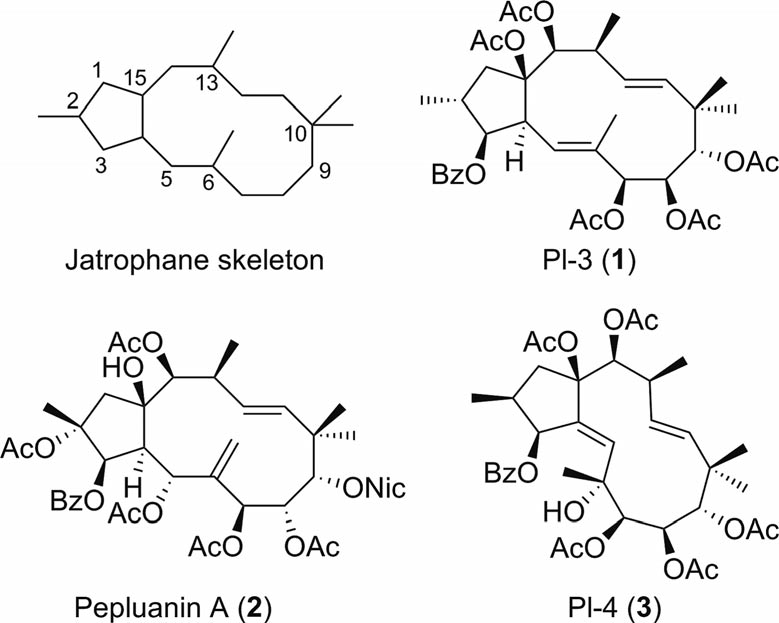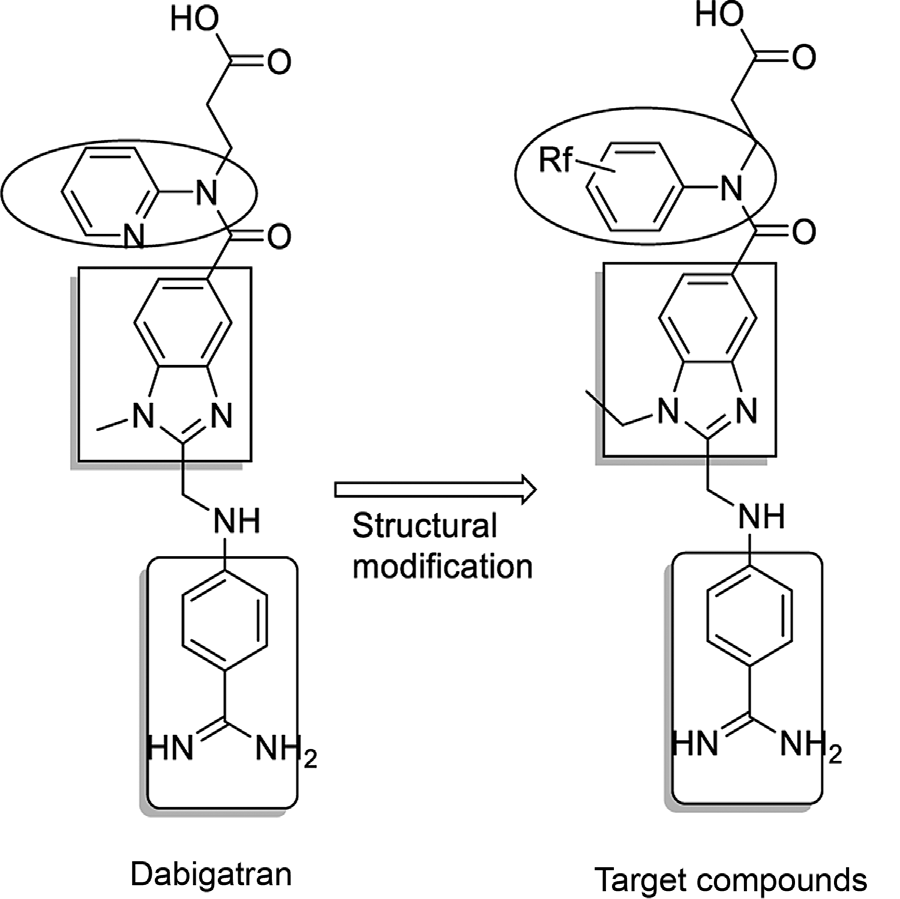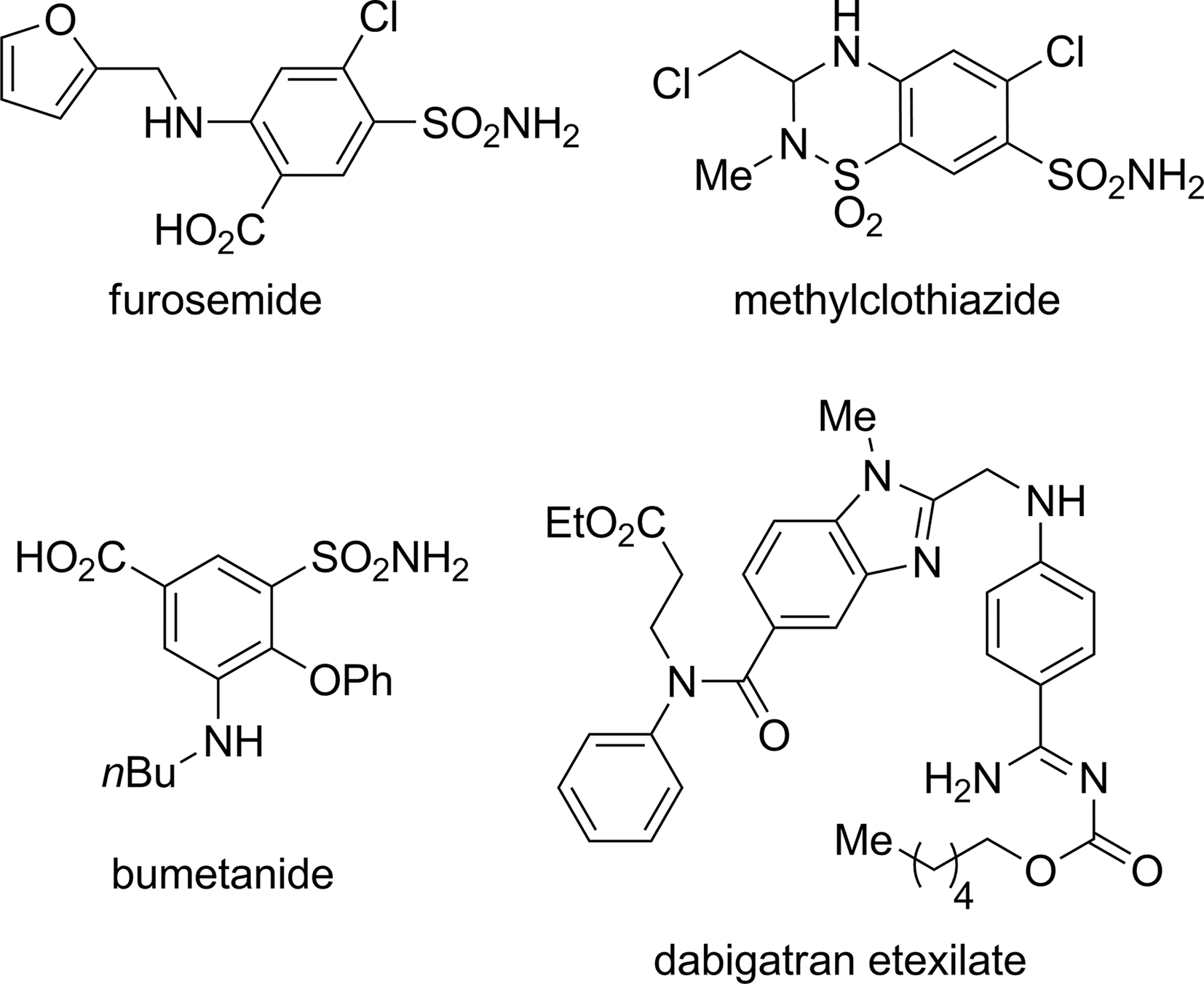Chemicals list & Research Gallery
CAS number: 210108-85-3
Jatrophane 1 is a diterpenoid. It has a role as a metabolite.

Jatrophane skeleton and representative jatrophane diterpenes.
CAS number: 210108-86-4
Jatrophane 2 has been reported in Euphorbia peplus with data available.

Jatrophane skeleton and representative jatrophane diterpenes.
CAS number: 210108-87-5
Jatrophane 3 is a diterpene ester compound, which is derived from the plant genus *Euphorbia*. It is a kind of jatrophane diterpene polyester that can be isolated from the highly irritant extract of whole fresh plants of E. peplus L.

Jatrophane skeleton and representative jatrophane diterpenes.

Retrosynthetic analysis.
CAS number: 210108-88-6
Jatrophane 4 has been reported in Euphorbia peplus with data available.

Jatrophane skeleton and representative jatrophane diterpenes.
CAS number: 210108-89-7
Jatropha is a genus of flowering plants in the spurge family, Euphorbiaceae. The name is derived from the Greek words ἰατρός (iatros), meaning physician.

Jatrophane skeleton and representative jatrophane diterpenes.
CAS number: 210108-90-0
Jatropha is a genus of flowering plants in the spurge family, Euphorbiaceae. The name is derived from the Greek words ἰατρός (iatros), meaning physician.

Jatrophane skeleton and representative jatrophane diterpenes.
CAS number: 2114-11-6
2-Propen-1-yl carbamate, also known as allyl carbamate or allylurethane, is a carbamic acid ester, specifically the allyl ester.
![Synthesis of Allyl Carbamate by [3.3] Sigmatropic Rearrangement.](http://www.wlxkc.cn/picture/802636_01.png)
Synthesis of Allyl Carbamate by [3.3] Sigmatropic Rearrangement.

Synthesis of Optically Active Allyl Carbamate by Enantioselective Addition of Diethylzinc.
CAS number: 211914-51-1
Dabigatran is a Direct Thrombin Inhibitor. The mechanism of action of dabigatran is as a Thrombin Inhibitor.

Design strategy of fluorinated thrombin inhibitor derivaties.
CAS number: 211915-06-9
Dabigatran etexilate is an oral prodrug that is hydrolyzed to the competitive and reversible direct thrombin inhibitor [dabigatran]. Dabigatran etexilate may be used to decrease the risk of venous thromboembolic events in patients in whom anticoagulation therapy is indicated. In contrast to warfarin, because its anticoagulant effects are predictable, lab monitoring is not necessary. Dabigatran etexilate was approved by the FDA in 2010.

Structures of commercial thrombin inhibitory drugs.

Some aniline-containing pharmaceuticals: furosemide, methylclothiazide, bumetanide
CAS number: 21211-65-4
Dipyrromethane is a dipyrrole.

Synthesis of dipyrromethane 14 required for the porphyrin condensation reaction.